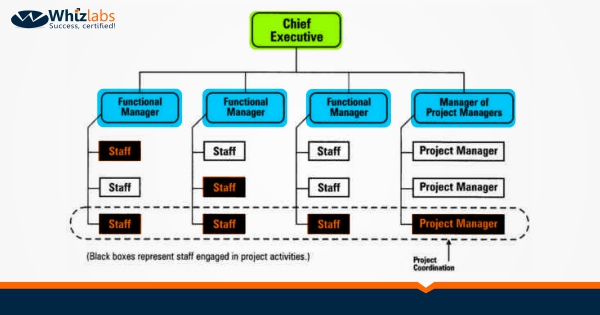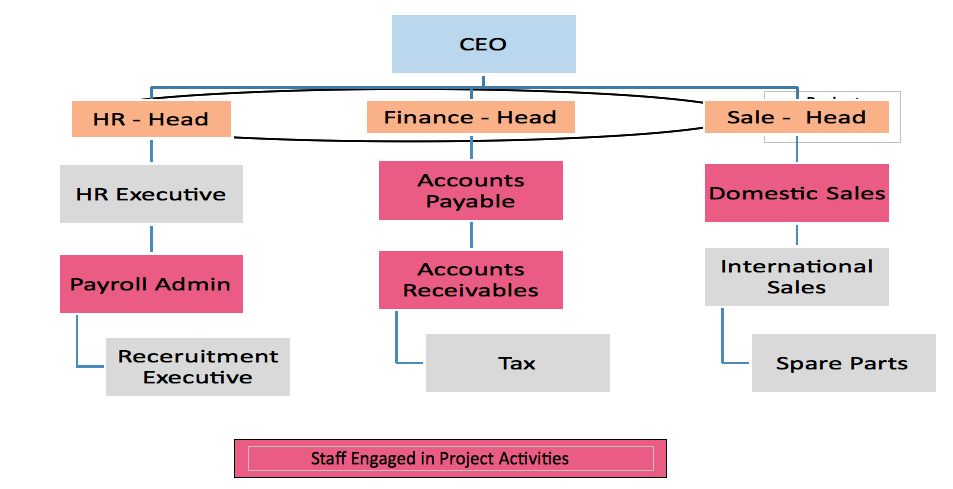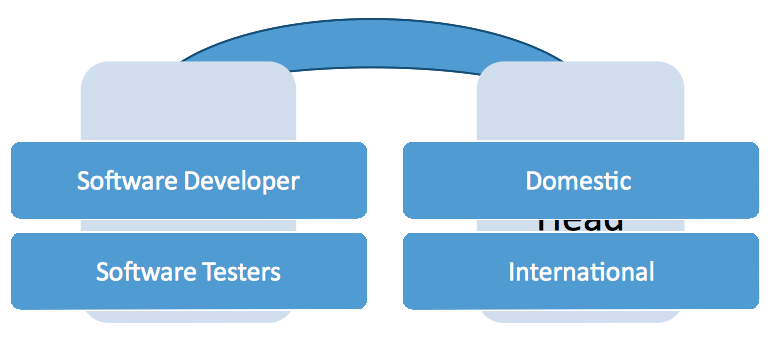Organizational Influences on Project Management:
Your approach on project management may vary based on the type of Organizational that you are working for. Organizations may be structured in a traditional or functional manner or a Projectized structure. Your project manager authority and resource availability will depend on type of organization.
Organization culture, style, and structure influence how projects are performed. An organizations degree of project maturity and its project management systems can also influence the project. As a project manager you should know under what type of organization you are working. It is very imperative for a project manager to know his or her authoritative power and that it can differ from organization to organization or from project to project. It can also differ on the type of organization where the project manager is working. As a project manager, you should know about these organizations and particularly the authority and power of the project manager in these organizations.
Functional Organization
|
Project characteristics |
Functional |
Weak matrix |
Balanced Matrix |
Strong Matrix |
Projectized |
| Project Managers Authority |
Low or Zero |
Limited |
Low or Moderate |
Moderate to High |
High to almost total |
| Resource Availability |
Low or Zero |
Limited |
Low or Moderate |
Moderate to High |
High to almost total |
| Project Manager’s Role |
Part-time |
Part-time |
Full-time |
Full-time |
Full-time |
| Project Budget Control |
Functional Manager |
Functional Manager |
Functional Manager+ Project Manager |
Project Manager |
Project Manager |
| Project Management Administrative Staff |
Part-time |
Part-time |
Part-time |
Full-time |
Full-time |
Functional Organization
- Functional organization is a traditional organization structure where authorities are divided based on the functions performed by that particular group of people, such as finance, HR, marketing and purchase etc.
- Power and Authority stands with the functional manager.
- The functional manager reserves the authority to release the resources based on their knowledge and subject matter expertness.
- Resource come backs to project manager after finishing the project.
- The resources working in this kind of organization reports to the functional manager.
- Project manager having very less power in this kind of organization. Job security exits in functional organization. Once project get over and the resources can be transferred to other project or routine work.
- Skills of project manager are very less utilized here.
- The resource assigned as the “project manager” is usually a team member within a functional area and does not have the title of project manager.
- The functional manager will control the budget and the “project manager” will act more as a coordinator or expediter of project activities rather than having true project management responsibilities.
- Resources for the project will need to be negotiated for with the functional managers and the accessibility of those resources will be based on business conditions.
- Any type of escalations of issues would need to be made to the functional manager.
- Because the “project manager” has Low to no authority, the project can take longer to complete than in other organizational structures and there is generally no recognized project management methodology or best practices.
Hierarchy of Functional Organization
As shown in above hierarchy
- Each employee has one clear superior.
- Supervisor reports to CEO.
- Each member reports to one manager and one person at the top is in charge.
- Team members are grouped by specialty such as HR, Finance and Sales.
- Specialties are further subdivided into focused functional areas such as HR executive, Payroll admin and recruitment executive.
- Each department will do its project work independently of other departments.
Functional organization at a glance
- Project manager assisting the functional manager.
- Project manager spends lot of time doing administration task and often only work as PM part of the time.
- All the project work happen in particular department and head of the department is complete in charge of all aspects of that department.
Functional organizations do complete projects, but these projects are specific to the function of the department the project falls into.
Example
IT Department could implement new software for the Marketing Department. The role of the IT Department is separate from the Marketing Department, but the coordination between the two functional departments would be evident. Communication between departments flows through functional managers down to the project team
Project Coordination and communication flow in functional organization
In Functional organizations communication route through functional managers. The above figure shows the relationship between business departments and the flow of communication between project and departments.
Benefits of the Functional Organization Structure
- Employees are grouped as per their knowledge and skills.
- Workers are very skilled and efficient because they are experienced in same type of work and hence they perform well.
- Job responsibilities and reporting are straight to the functional head, and the hierarchy path is clear.
- Employees feel job security, and therefore, perform without any fear.
- Employees have faith in the organization.
- Employees have a clear career growth path.
- Within the functional department communication, cooperation and coordination is excellent.
Disadvantages of the Functional Organization Structure
- The employee may become lazy due to repeating the same type of work.
- Conflicts may arise due to the promotion of another employee.
- Highly skilled employees cost more to the organization.
- The functional manager pays attention to only his department; he usually doesn’t care for other teams or sections.
- Poor communications and poor inter-department coordination.
- Employees may have little understanding or concern for anything happening outside of their functional area. This may cause obstacles in communication, coordination, and cooperation.
- Functional structure is rigid; therefore, they are very slow to adopt changes.
- Delays in decision making due to bureaucratic hierarchy.
Questions & Answers
- The amount of authority of a project manager possesses can be related to:
- A. The amount of authority the manager of the project manager possesses.
- B. The project managers influencing skills.
- C. The project manager’s communication skills
- D. The organizational structure.
Correct Answer: D
- Which is one of the advantages of a functional structure?
- A. All employees report to one manager and have a clear chain of command.
- B. All employees report to two or more managers, but project team members show loyalty to functional managers.
- C. The organization is focused on project and project work.
- D. Teams are collocated.
Correct Answer: A
- You have been assigned a project in which you need to develop software for an organization. You report to project manager in charge of this project and VP IT, who shares the responsibility for this project. Which organization structure do you work in?
- A. Functional organization
- B. Weak matrix organization
- C. Projectized organization
- D. Balanced matrix organization
Correct Answer: D
- A project manager is trying to complete a software development project. But cannot get enough attention for the project. Resources are focused on completing process related work, and the project manager has little authority to assign resources. What form of organization must the project manager be working with?
- A. Functional
- B. Matrix
- C. Expediter
- D. Coordinator
Correct Answer: A
Take a Free Demo of Whizlabs PMP Offerings:
PMP Exam Questions
PMP Online Training (with full length videos)
PMP Live Virtual Classroom Training
- What are Scrum roles and why it’s needed? - August 12, 2017
- Stakeholder Analysis – Is it required? - July 28, 2017
- Project Manager – An integrator, how? - July 28, 2017
- Different PMI Certifications – Which one to choose? - July 28, 2017
- What is the importance of Change Management in Project Management? - June 23, 2017
- What’s important to know to build a career in Agile? - June 23, 2017
- Agile Basics, Manifesto & Principles - June 23, 2017
- Scrum – Is it mandatory to learn in today’s IT market? - June 2, 2017


